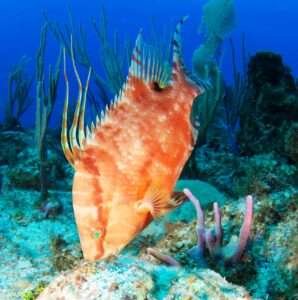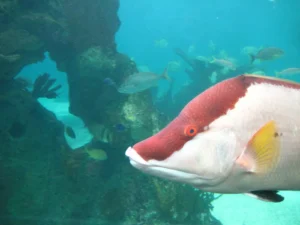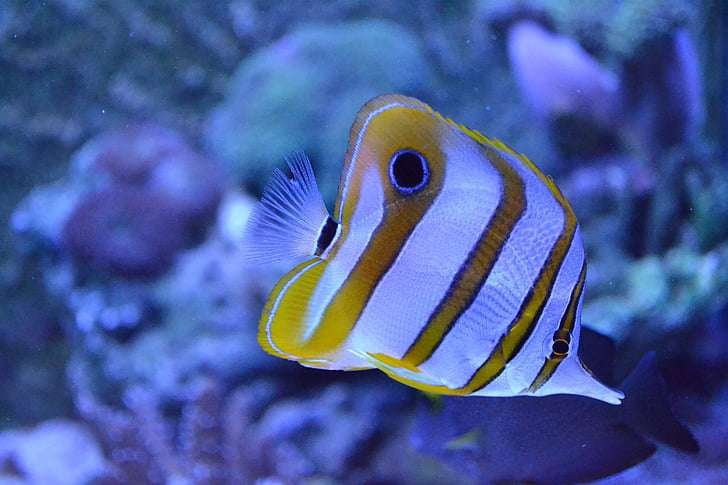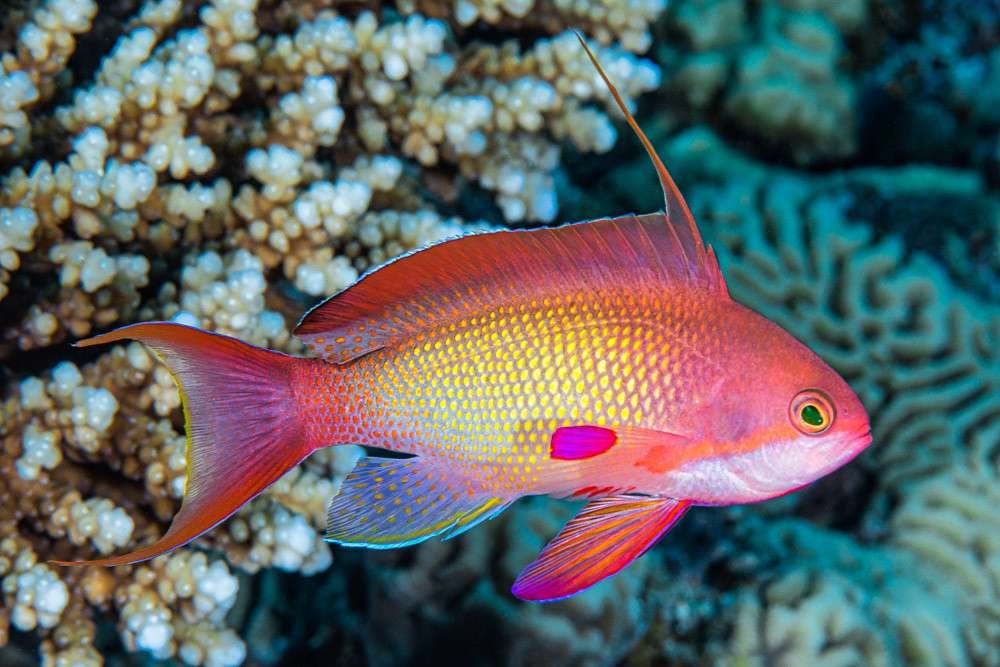A Hogfish

Hogfish are a unique and tasty type of fish that are in the Labridae family, which also includes wrasses. Over 600 species live in this family. Most of them live in warm and tropical waters, but some, like the California sheepshead (S. pulcher) in the Pacific and the Tautog (T. onitis) in the Northern Atlantic, can be found in cooler waters. In the Western Atlantic, the hogfish is the biggest wrasse. It can grow up to 3 feet long. They have smaller, more colorful cousins called the Spanish hogfish (yellow and purple) and the Cuban hogfish (red and yellow). You might see them while diving on islands in the southern Atlantic and Caribbean.
Hogfish are not in the same family as hog snapper, even though they are sometimes called hog snapper. They stand out from the crowd and are easy to find. They have the same coloring and body shape as snappers and live in the same or similar places. But hogs and many species of wrasses have traits that are typical of their family, like having hermaphroditic females and lips that can move very quickly (look at the slingjaw wrasse). The word “wrasse” comes from the Cornish word “wragh,” which means “old women.” The genus name for hogfish, Lachnolaimus, comes from the Greek words “Lachne,” which means “more hairy than others,” and “Laimos,” which means “throat.” The popular name “hogfish” comes from their long, pointed noses and the way they root around in the sand to find food.
Food and Distribution
The hogfish lives in the Western Atlantic, from North Carolina and Bermuda to Brazil. You can find these fish up to 200 feet deep, but most of the time you’ll find them at 100 feet or less, where corals like sea fans can protect them. When they are young, hogfish usually live in uneven reef or seagrass beds. As they get older, they move to more stable reef or ledge structures, where they tend to stay because they are very connected to a certain area. You can see hogfish during the day on the reef or the sand around it. They dig in the sand to find mollusks like clams, crustaceans like crabs and shrimp, and even echinoderms like sea urchins. The pharyngeal jaws of this species are a set of plates that help break down the shells of their food so that they can be digested more easily.
Having children and growing

The hogfish is a protogynous hermaphrodite, which means it is born female but changes into a male later on based on social cues from its surrounding population. When these fish spawn, they do so in groups, with one male having a brood of five to fifteen females. When the male is taken out of the group, the biggest female starts to change into a male by getting male gonads and male-like features on her body, like a more dramatic, sloping head and darker skin around her face that makes it look like a mask
. The changing of the gonads can take up to two months, and the changes to the outside body continue to get stronger over time. Most people change their gender from female to male when they are about 3 years old and 14 inches tall. But in places where hogfish are heavily fished, they have been known to change sizes at a much younger age. A study done in 2001 on 2169 hogfish caught in the Eastern Gulf of Mexico found that half of the females were fully grown at about 7 inches fork length, and the other half were fully grown at about 15 inches fork length.
Hogs spawn in the winter and spring. The males do interesting things like shake and raise their fins before rushing a few feet off the ground with the female while releasing their eggs and sperm to be fertilized by other fish. A single male hogfish can spawn several times a day with females in his harem. A female hogfish can spawn several times a season, and her eggs hatch in groups of 1,700 to 64,600. These eggs float in the water and hatch in 24 hours. They are larvae for 26 days, giving or taking three days, until they settle out of the water as juveniles.
Long-Term Success
One thing to keep in mind about sustainable seafood is that the Monterey Bay Seafood Watch says that hogfish caught by hand in the United States is the best choice. However, the IUCN says that the species’ population is declining, which is shown by the fact that fewer and fewer of them are caught for business purposes every year in Florida. If you catch this fish with a hook and line, be careful and return it. If you’re spearfishing, make sure you follow the latest rules for fisheries.
This species doesn’t handle barotrauma well, probably because their body isn’t as open, so trapped gases can’t grow as well as they can in fish with wider bodies, like grouper. Also, their pharyngeal jaws stop expansion from moving out of the throat, so if your hogfish is showing signs or having trouble going back down after being released, you might want to use venting or descending gear.
It’s important to think about what will happen if you catch hogfish when they are spawning. Getting rid of a male from an area where they might not be common can affect the group’s ability to reproduce, since it might take longer for the female to change into a baby than during the rest of the season. This means that the group might not be able to reproduce as much as it could.


